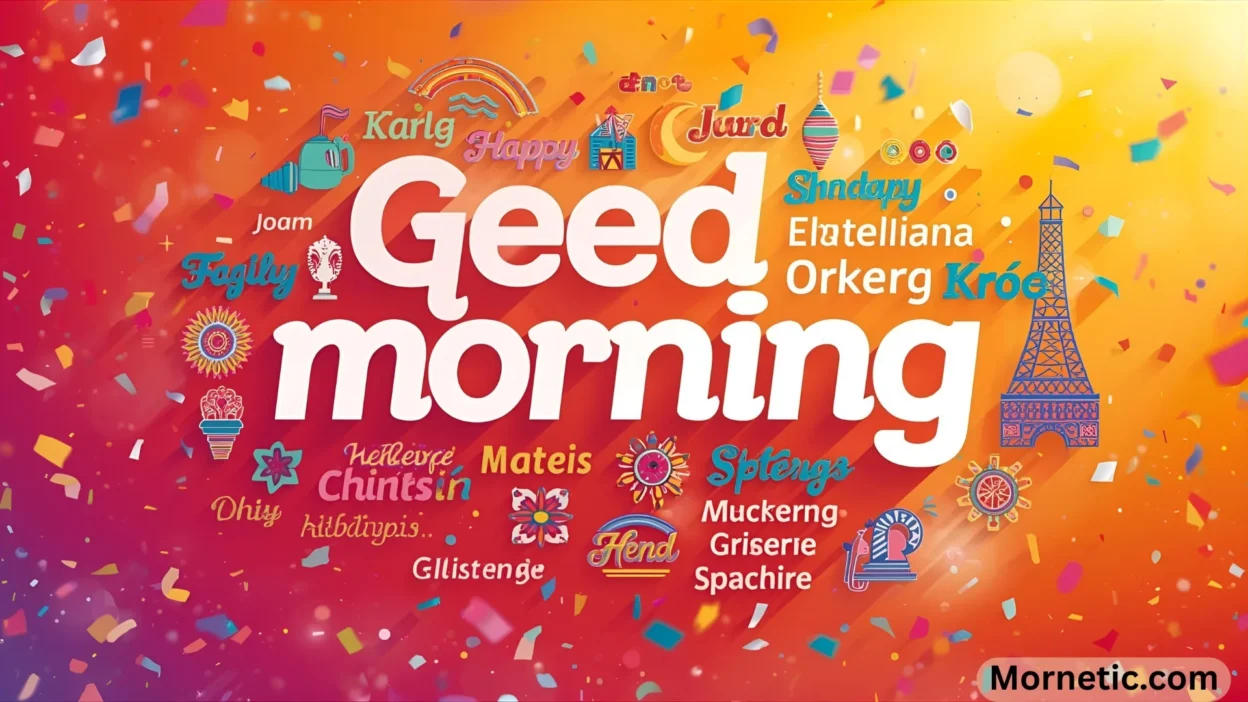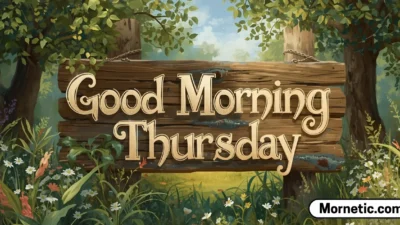Waking up and greeting someone is one of the first social interactions we have each day. That simple “good morning” sets the tone for the hours to follow. But have you ever wondered how to spread that morning cheer across cultures? Learning how to say “good morning” in different languages is more than a fun party trick—it’s a key that unlocks warmer connections during travel, builds rapport with international colleagues, and shows respect for diverse cultures.
In our increasingly connected world, a multilingual greeting can be a powerful tool. This comprehensive guide will take you on a linguistic journey across the globe. We’ll explore greetings from the romantic streets of Europe to the bustling markets of Asia and the vibrant communities of Africa. You’ll not only learn the words but also the correct pronunciations and the cultural nuances behind them. Let’s start our day by learning how to wish someone a good morning around the world!
The Art of the Morning Greeting: Why It Matters
A morning greeting is a universal sign of acknowledgment and goodwill. It’s a small but significant social ritual. Using a local greeting shows that you’ve made an effort, bridging gaps and fostering immediate camaraderie. In business, it can be the difference between a cold meeting and a warm, productive one. While a simple “hello” often works, using the specific morning greeting demonstrates a deeper level of cultural awareness and respect. It tells the person you are engaging with that you see and value their background.
A Guide to Pronunciation Help
Before we dive in, let’s decode the pronunciation key used in this article:
- Syllables in bold indicate where the stress should be.
- We’ll use intuitive, phonetic spellings to make it easy for English speakers.
European Good Morning Greetings
Europe is a tapestry of languages, and its morning greetings are just as diverse. Here’s how to say good morning in some of the most spoken European languages.
Spanish: Buenos Días
- Pronunciation: Bweh-nohs Dee-ahs
- Cultural Note: In Spain and Latin America, this is the standard formal greeting until around noon. It’s often accompanied by a kiss on the cheek (in Spain) or a warm handshake.
French: Bonjour
- Pronunciation: Bohn-zhoor
- Cultural Note: “Bonjour” is essential for every interaction in France. It’s considered polite to say it when you enter a shop or greet anyone, even strangers in a lift.
Italian: Buongiorno
- Pronunciation: Bwohn-jor-noh
- Cultural Note: This greeting is used formally and informally until the early afternoon. Italians are known for their warmth, so pair it with a smile!
German: Guten Morgen
- Pronunciation: Goo-ten Mor-gen
- Cultural Note: Germans appreciate punctuality and directness, and a clear “Guten Morgen” is a perfect, polite way to start the day.
Portuguese: Bom Dia
- Pronunciation: Bong Dee-ah
- Cultural Note: Used in both Portugal and Brazil, “Bom Dia” is a cheerful and common greeting. The pronunciation in Brazil is often slightly softer.
Dutch: Goedemorgen
- Pronunciation: Khoo-duh-mawr-ghun
- Cultural Note: The Dutch are generally direct and open. A “Goedemorgen” is a straightforward and friendly way to acknowledge someone.
Russian: Доброе утро (Dobroye utro)
- Pronunciation: Dob-ruh-ye oo-truh
- Cultural Note: This is the standard morning greeting. Remember to use the formal “Vy” (you) with people you don’t know well, paired with their first name and patronymic.
Swedish: God morgon
- Pronunciation: Good mor-ron
- Cultural Note: Swedes often value a calm and reserved demeanor. A simple “God morgon” with a nod is a perfectly appropriate greeting.
Asian Good Morning Greetings
Asia’s linguistic landscape is incredibly rich. Greetings here often involve different levels of formality and can include gestures.
Mandarin Chinese: 早上好 (Zǎoshang hǎo)
- Pronunciation: Zow-shahng how
- Cultural Note: This is a standard, polite greeting. A more informal version is simply “早 (Zǎo)!”. Bowing is not typically part of everyday greetings in modern China; a nod or smile is common.
Japanese: おはようございます (Ohayō gozaimasu)
- Pronunciation: Oh-hai-yo go-zai-mas
- Cultural Note: The formal version is “Ohayō gozaimasu.” With close friends and family, you can shorten it to “Ohayō!”. A bow often accompanies the greeting, with the depth depending on the formality of the situation.
Korean: 좋은 아침이에요 (Joeun achimieyo)
- Pronunciation: Joh-oon ah-cheem-ee-eh-yo
- Cultural Note: This is a modern, commonly used phrase. An even more informal version is simply “안녕 (Annyeong)!”, which means “hello.” A slight bow is a common and respectful gesture.
Hindi: नमस्ते (Namaste) / शुभ प्रभात (Shubh Prabhaat)
- Pronunciation: Nuh-muh-stay / Shubh Pruh-bhaat
- Cultural Note: “Namaste” (with hands pressed together near the chest) is a universal greeting used at any time. “Shubh Prabhaat” is a more literal “good morning” but is less commonly used in casual conversation.
Arabic: صباح الخير (Sabah al-khair)
- Pronunciation: Sah-bah al-khair
- Cultural Note: This is the standard greeting in the morning across the Arab world. The response is “صباح النور (Sabah an-nur)” meaning “light of the morning.” It is used in both formal and informal settings.
African Good Morning Greetings
Africa is home to over a thousand languages. Here are greetings from some of the most widely spoken ones.
Swahili: Habari za asubuhi
- Pronunciation: Hah-bah-ree zah ah-soo-boo-hee
- Cultural Note: Swahili is a lingua franca in East Africa. “Habari” means “news,” so you are essentially asking, “What’s the news of the morning?” A common response is “Nzuri” (good).
Amharic: እንደምን አደርክ (Endemen aderk?)
- Pronunciation: En-dem-en ah-derk (to a male)
- Cultural Note: This greeting is a question meaning “How did you spend the night?” It demonstrates a deep level of care and interest in the other person’s well-being.
Yoruba: Ẹ káàrọ̀
- Pronunciation: Eh kah-roh
- Cultural Note: The “Ẹ” denotes respect. When greeting an elder or someone in a position of authority, this formal version is essential. To a peer, you could use “Ẹ káàrọ̀” or a more casual “Káàrọ̀.”
Zulu: Sawubona
- Pronunciation: Sah-woo-boh-nah
- Cultural Note: “Sawubona” literally means “I see you,” acknowledging the other person’s presence and humanity. It is used at any time of day, not just the morning.
Greetings from Down Under & The Pacific
The languages of Oceania offer unique and beautiful ways to start the day.
Hawaiian: Aloha kakahiaka
- Pronunciation: Ah-loh-hah kah-kah-hee-ah-kah
- Cultural Note: “Aloha” is more than a greeting; it carries meanings of love, peace, and compassion. “Aloha kakahiaka” is a warm, heartfelt way to wish someone a good morning.
Māori: Ata mārie
- Pronunciation: Ah-tah maa-ree-eh
- Cultural Note: This is a peaceful and calm greeting, literally wishing someone a “calm morning.” The Māori language (te reo Māori) is experiencing a vibrant revival in New Zealand.
Australian Aboriginal English: G’day
- Pronunciation: Guh-day
- Cultural Note: While “G’day” is a classic Australian greeting used at any time, it’s a quintessential part of the morning lexicon. It’s informal, friendly, and iconic.
How to Master the Pronunciation 🎯
Feeling overwhelmed? Don’t be! Here are some proven tips to help you get the pronunciations right.
- 🗣️ Use Technology: Google Translate’s audio feature is a great starting point.
- 🎧 Listen Actively: Watch travel vlogs or listen to language podcasts to hear native speakers.
- 📱 Try Language Apps: Apps like Duolingo, Memrise, or Pimsleur offer pronunciation practice.
- 👄 Break It Down: Practice one syllable at a time, then slowly combine them.
- 🙊 Don’t Fear Mistakes: Native speakers almost always appreciate the effort, even if your accent isn’t perfect.
Cultural Etiquette: Beyond the Words
Saying the words correctly is only half the battle. Understanding the accompanying body language and social context is crucial.
- 🇯🇵 Bowing in Japan: The depth and duration of the bow matter. A small nod is casual, while a deeper bow shows respect.
- 🇮🇳 The Namaste in India: Pressing your palms together at the chest is a sign of respect. The higher the hands, the greater the respect.
- 🇫🇷 La Bise in France: The cheek kiss greeting varies by region—anywhere from one to four kisses! In a professional setting, a handshake is safer.
- 🇹🇭 The Wai in Thailand: A slight bow with the palms pressed together is called a “wai.” The height of your hands and the depth of the bow indicate the level of respect.
The Power of a Simple Greeting in 2024
In a world where digital communication often replaces face-to-face interaction, taking a moment to learn and use a personal, culturally-aware greeting is more powerful than ever. It cuts through the noise and creates a genuine human connection. Whether you’re a traveler, a global professional, or a curious mind, this skill enriches your interactions and broadens your worldview.
Frequently Asked Questions (FAQ)
What is the most common way to say good morning in the world?
While there’s no single “most common” greeting, “Good Morning” in English is widely understood in many international and tourist contexts. However, local greetings like the Spanish “Buenos Días” or the Arabic “Sabah al-khair” are used by hundreds of millions of people daily.
How do you say good morning in American Sign Language (ASL)?
To sign “Good Morning” in ASL, you sign “Good” by placing your flat hand against your chin and moving it forward, followed by “Morning,” which is signed by placing the crook of your elbow on the back of your other hand and then raising your forearm as if the sun is rising.
Is it rude to just say “hello” instead of “good morning”?
In most cultures, it is not considered rude. “Hello” is a universally safe and polite greeting. However, using the specific “good morning” greeting is often seen as more personal, attentive, and culturally sensitive.
What’s an easy and beautiful way to say good morning?
Many find the Italian “Buongiorno” (bwohn-jor-noh) and the Hawaiian “Aloha kakahiaka” (ah-loh-hah kah-kah-hee-ah-kah) to be particularly melodic and beautiful. The French “Bonjour” is also a classic and elegant choice.
How can I remember all these different greetings?
Focus on learning 3-5 that are most relevant to your life or travels. Use mnemonic devices, practice with flashcards, and try to use them in context. Consistency is more effective than trying to memorize them all at once

Grace is a lifestyle writer from California who loves starting mornings with positivity. At Mornetic, she shares uplifting quotes and cheerful messages to brighten your day.




